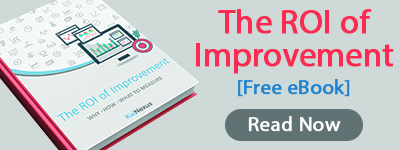Last weekend, I left my baby with Grammy and Poppy and journeyed to the Mecca of home furnishings. Obviously, I mean IKEA. I’ve crammed countless loads of IKEA furniture into my car over the years, but this is the first time I’ve been able to suppress my interior design envy long enough to actually pay attention to the little things in the store that remind me of Lean practices.
IKEA prides itself on efficiency and affordability. Michael Ohlsson (who took over as CEO in 2008), traces this corporate culture back to the company’s founder Ingvar Kamprad, who is from a poor region in Sweden where people are “stubborn, cost-conscious, and ingenious at making a living with very little.” This culture is apparent in every element of the store, from its layout and signage to packaging and storage.
If you’ve ever been to an IKEA, you know that there’s a path to follow through the store. Passing through liveable rooms on one side and furniture grouped by function on the other, you make your way through the rat maze - or down the yellow brick road - to the marketplace, which has small items in a more traditional store layout (I imagine your perspective here varies on whether you got tricked into shopping with the promise of Swedish meatballs).
This path was the first thing in the store that reminds me of Lean principles. I can’t attest to whether or not this is new - it’s possible that I was in a daze when shopping in the past - but this time, I noticed that the path was marked with ceiling lights projecting arrows down onto the path. My friends, this is genius. By using lights to mark the path rather than more traditional tape or paint, IKEA makes it easy to reroute the maze in the future. This is an awesome improvement to the status quo that both improves the customer experience (if you get lost in IKEA, you’re never getting out alive), and makes it free and easy to change the route in the future.
One of the weirdest - and most awesome - things about IKEA is that it’s full of perfectly decorated rooms, complete with books and dishes and children’s artwork on the walls. You really can imagine that the person living in each of them has only stepped out momentarily. Each piece - from the largest shelving unit down to the blanket draped over the back of the couch - has a red tag on it, telling you exactly where to pick it up. This streamlined process allows IKEA to maximize their showroom space with displays, rather than storage of purchasable units. Genius. The store provides cards to write down the item information as you go, but it’s much more efficient to snap a picture with your phone.

IKEA is the pioneer of affordable flat-pack furniture. As a frequent solo mover in my younger days, I can tell you that this alone is the reason my home is littered with IKEA furniture. How else can you get several bookcases, a dresser, and a bed home with a Honda Fit? While it’s awesome for me the consumer, this method of packing is better for IKEA, too. It’s cheaper to pack, ship, and store furniture in this form - a savings that the company happily passes on to the consumer. For example, designers in 2008 found a way to double the amount of the popular Ektorp sofa they could fit into a given space, which ultimately reduced the price by $135 for consumers. Increasing efficiency, reducing wasted space, and improving the customer experience? Sounds like Lean to me.
Another way to increase efficiency and cut costs at IKEA is the way they sell furniture parts separately, allowing customers to pick and choose exactly which they need. That way, the company doesn’t have to use resources to package and store each combination, and customers can customize their selection.
The warehouse is a prime example of how IKEA reduces cost by letting consumers take care of their own legwork. When you get out of the maze of room displays, you enter into an immense warehouse full of aisles and bins neatly labeled to coincide with the red tags from the display floor. Faster for employees to stock the shelves, faster for customers to find what they need, and not an inch of space is wasted. It’s so efficient that it gives me goosebumps.
What have you found at IKEA that reminds you of Lean?



Add a Comment